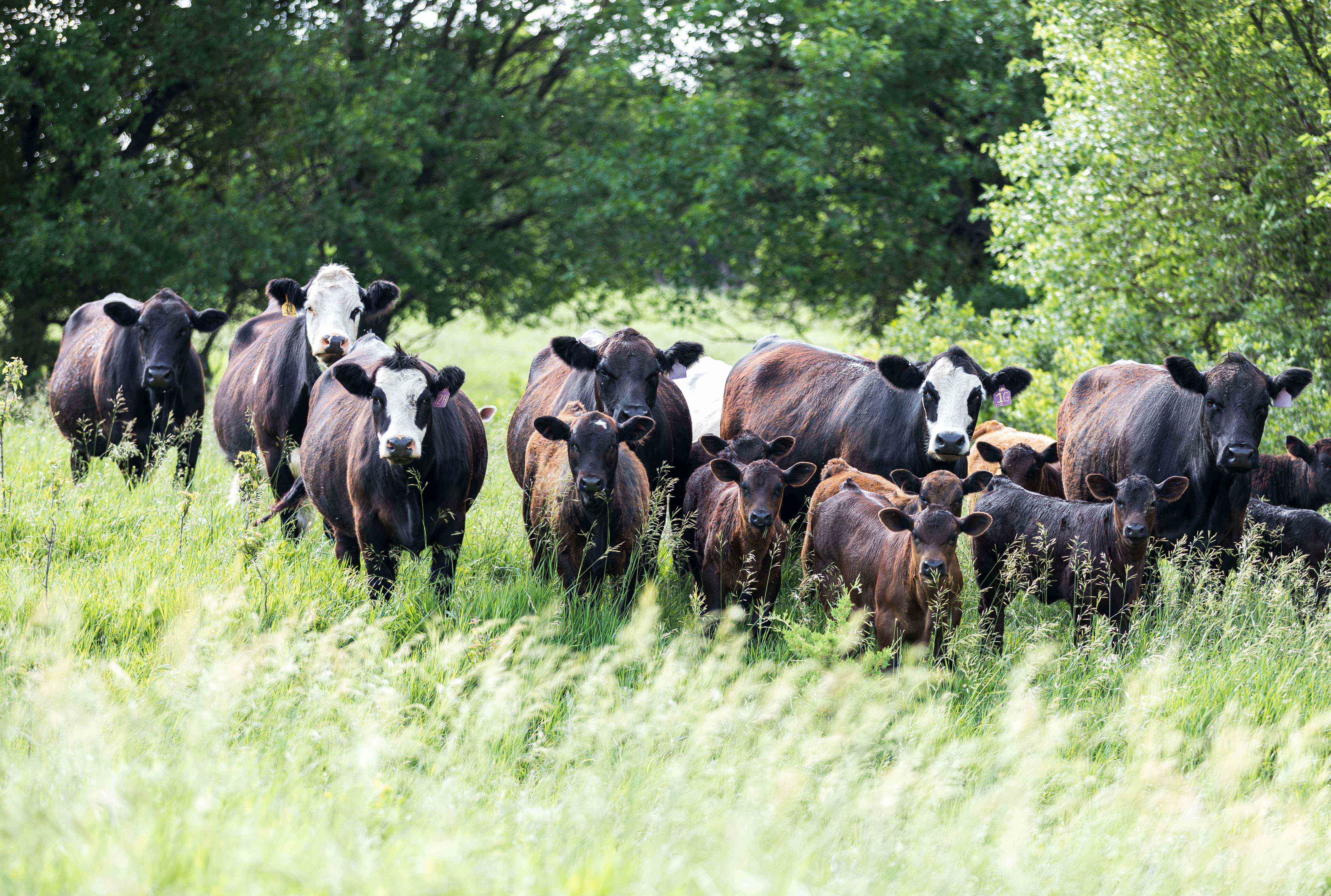
K-State experts say there is a genetic connection in the occurrence of twins in cow families. | Download this photo.
Cattle Chat: Factors influencing the frequency of twins
K-State cattle experts explain how genetics and nutrition play a role in likelihood of twins
June 13, 2023
By Lisa Moser, K-State Research and Extension news service
MANHATTAN, Kan. — Look around and it is easy to spot identical twins due to their similar features and mannerisms. Just like with people, twin pregnancies can also happen in beef herds and there are some genetic and environmental factors that influence the likelihood of twin births, say the experts at Kansas State University’s Beef Cattle Institute.
“Twin births occur in about 2% of beef pregnancies,” said Bob Larson, K-State veterinarian, while speaking on a recent Cattle Chat podcast.
Larson said that the majority of twin pregnancies are the result of two eggs being ovulated and fertilized at the time of mating. These are known as fraternal twins.
“These calves would be full siblings,” Larson said. He adds that identical twins are the result of a fertilized egg that splits in two during development.
K-State beef cattle geneticist and head of the Eastern Kansas Research and Extension Centers Bob Weaber said that there is a genetic link to why twins tend to occur more frequently in some cow families.
“There was a research study done in which cows were selected for twinning and the scientists, through selection, were able to increase the frequency of twins in the herd, so we know there is a genetic component to it,” Weaber said.
Larson agreed and added that producers who wanted more twins in the herd could make selections that would increase that likelihood over a few generations.
However, fraternal twin births also bring about some less desirable development especially when a bull and a heifer are born together said the experts. These females are termed free-martin and are infertile because of the male hormones crossing through shared blood vessels to the heifer during development.
“Over 90% of the time the heifers born alongside a twin bull are infertile and so you don’t want to retain those heifers in the herd,” said Brad White, K-State veterinarian.
Along with genetics, cow nutrition can also factor into the likelihood of carrying twins, said K-State beef cattle nutritionist Phillip Lancaster.
“Through research, when we looked at heifer development and puberty, we found that females that had higher glucose levels in their blood had increased fertility and a reduced age at puberty,” Lancaster said. “The glucose levels rise in cattle that are fed high energy diets.”
To hear the full discussion, listen to the Cattle Chat podcast online or through your preferred streaming platform.

